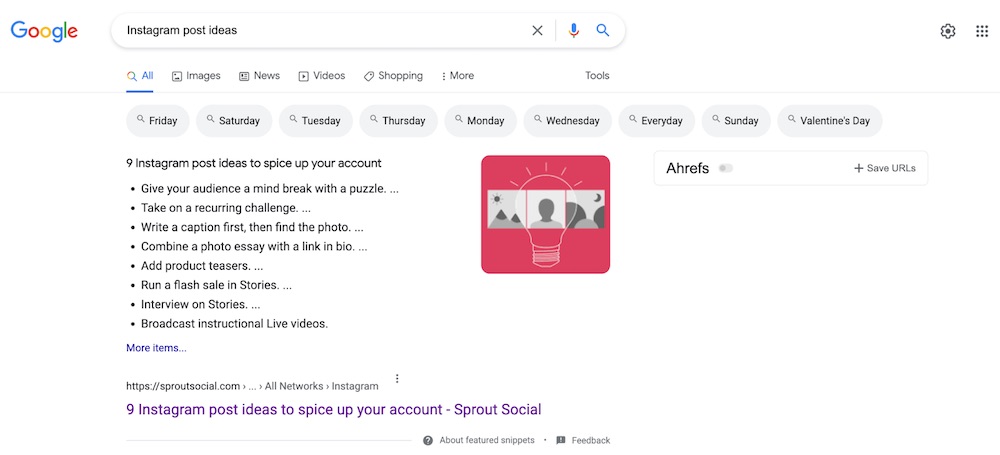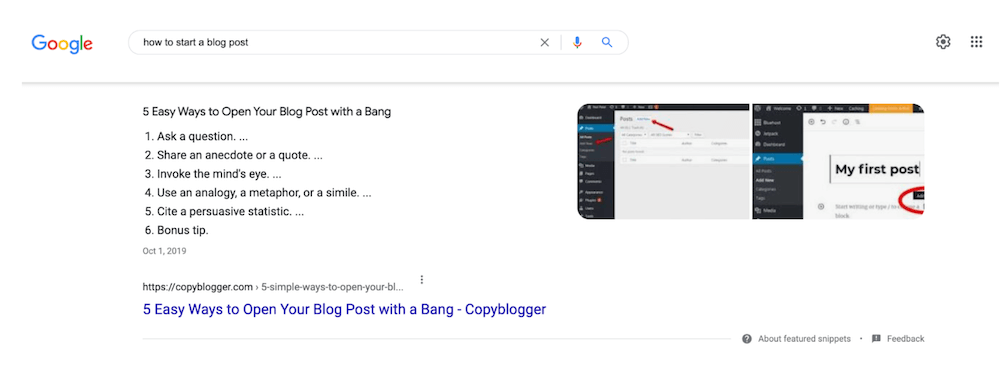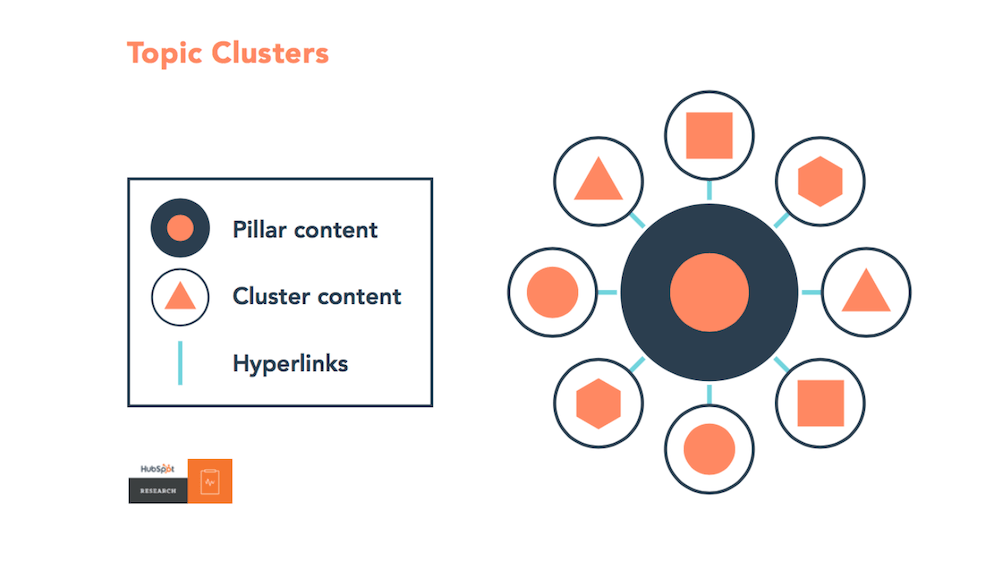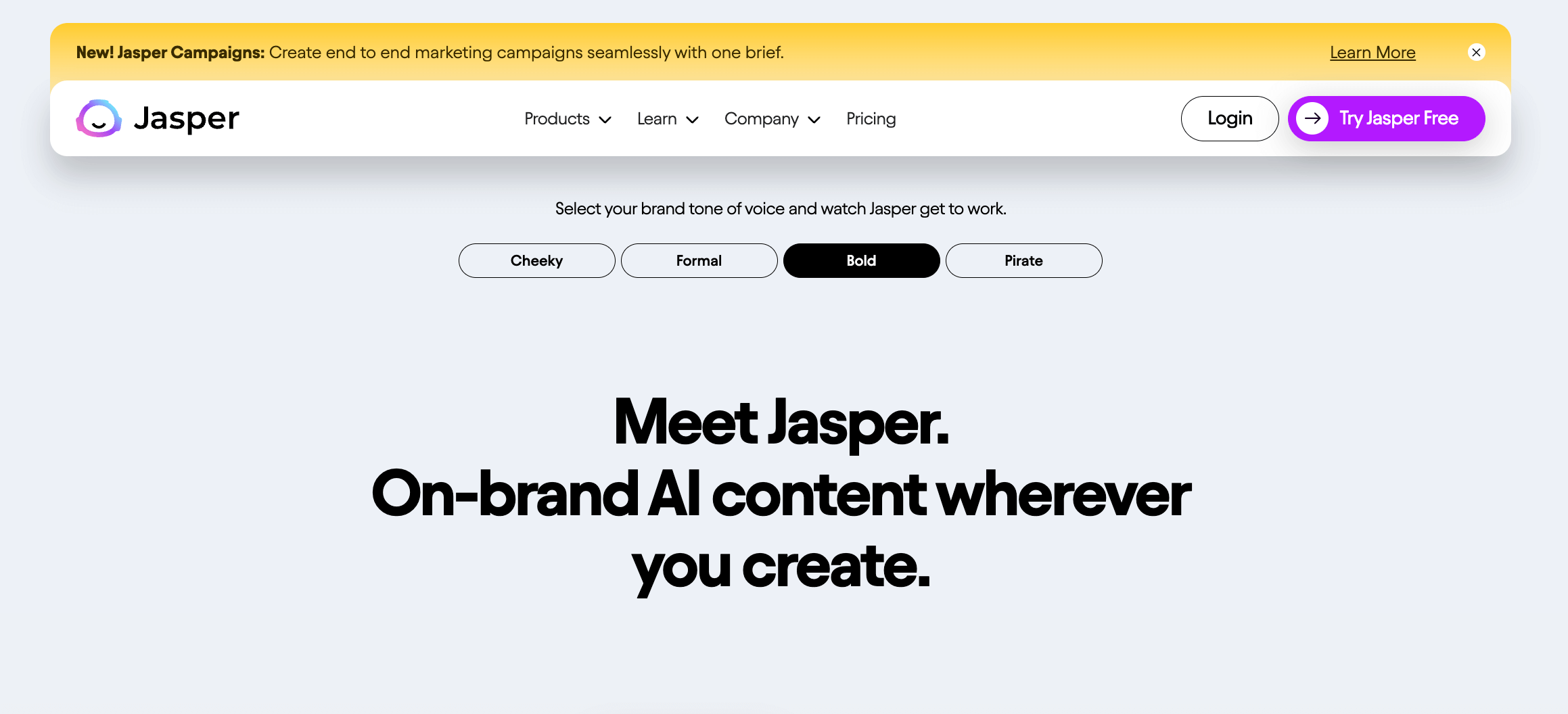Free
SEO & Content Marketing: Best SEO Tools & Tips
Looking to grow and increase revenue? SEO should be an essential part of your content marketing strategy. We’ve got you covered with our top tips and tools for creating SEO content.
You’ve probably heard about SEO and content marketing together, but how do they actually work hand in hand to drive success? We’ll show you how to leverage their partnership for maximum return on investment. Both SEO and content marketing aim to bring more traffic to your website, boost brand awareness, and ultimately boost your revenue.
In this article, we’ll cover:
– The connection between SEO and content marketing
– How to develop an effective SEO content strategy
– Different types of SEO content
– 11 SEO best practices
– 17 must-have SEO tools for your toolkit
So, what’s the connection between SEO and content marketing?
The truth is, SEO and high-quality content go hand in hand. SEO relies on top-notch content to attract search traffic, and high-quality content depends on SEO to reach its intended audience. They work in synergy to achieve their respective goals.

Here’s an example: let’s say you’re a social media marketer looking for “Instagram post ideas.” If you search on Google, you’ll likely find Sprout Social’s blog post ranking as the first result. This is a perfect example of content marketing and SEO at work. The post is well-written, optimized with SEO best practices like including the keyword in the URL and title, using headings and subheadings, and featuring relevant images. It’s not just about creating great content; it’s about using SEO and content marketing in harmony.
Now, let’s dive into how to develop an SEO content strategy:
1. Define your goal:
What do you want to achieve with your content? Whether it’s increasing site traffic, growing your email list, or driving sales and conversions, knowing your goal is crucial.
2. Identify your target audience:
Knowing who your content is for will shape the type and format of content you create. Poll your audience, ask for input, and conduct SEO research to understand their needs.
3. Conduct SEO research:
Look for long-tail keywords with lower competition, search volume in the triple digits or above, and search intent phrases like “best” or “how to.” This research will guide your content creation process.
4. Establish a content calendar:
Consistency is key in getting your SEO content to rank. Plan when to publish each piece of content, considering your ability to maintain quality. Start with a frequency that suits your brand, and refine as you gain experience.
5. Create and optimize your content:
As you create your content, be sure to incorporate internal links, encourage link building and social shares, add meta descriptions with keywords, use headings and subheadings, craft title tags, optimize images with alt text, naturally include your main keywords, and add a strong call-to-action. Also, format your content for readability.
Ready to take your SEO and content marketing to the next level? Check out our recommended SEO tools to add to your toolkit.
6. Track your progress and course-correct
Hey there! Want to track your progress and make sure you’re heading in the right direction with your SEO efforts? Using tools like Google Analytics can help you keep an eye on your metrics and see if your content is making any progress. Are you getting traffic from social platforms and direct sessions? It’s important to know.
Tracking your SEO progress not only helps you stay on top of things, but it also makes it easier to make changes when something isn’t working. If you see that your strategy isn’t getting the results you want, don’t be afraid to switch things up and test for better long-term outcomes.
Now, when it comes to SEO content, it’s not just limited to blogs. There are actually many different routes you can take. Depending on your strategy, SEO content can come in various forms. Essentially, anything you create online can be search-optimized and considered “SEO content.”
But here are some of the most popular content types that can help you rank in search engine results:
1. Blogs:
Blog posts are a classic choice for ranking in search engines. Whether you go for a listicle or a traditional informative blog post, writing content that’s optimized for both search engines and humans can drive organic traffic to your site. Having a library of high-quality blog posts that target search terms people are searching for can further increase your traffic.
2. Landing pages:
Landing pages, if written well, can also rank high in search engine results. While it may not be as common as with blog posts, it’s definitely possible. These standalone web pages are often used to capture email addresses as part of a larger digital marketing strategy. They can even take the form of product or sales pages.
3. Interactive tools:
SEO content isn’t just limited to writing. Interactive tools can also help your target audience find you through search queries. Once you understand what users are looking for, you can use SEO to rank interactive applications. Examples of this include NerdWallet’s Interest Rate Calculator or Zillow’s Rent Affordability Calculator.
4. Glossaries:
If your niche involves a lot of insider language and terms, creating a glossary can work wonders. It helps beginners understand these terms and can even help you rank for featured snippets in search engine results. The more comprehensive your glossary, the better.
5. In-depth guides:
In-depth guides are like extended blog posts. They cover every aspect of a subject, often in a step-by-step format, making them a go-to resource for relevant content. In-depth guides can also help you get backlinks, which are crucial for ranking for competitive keywords.
6. Videos:
Did you know that videos can also rank in search engines? When you search for certain topics, you’ll often come across YouTube videos in the search results (Google owns YouTube after all). So, consider creating and optimizing video content to rank well in search engines.
Once you’ve decided on the content type that aligns best with your goals and strategy, you’ll want to keep a few best practices in mind. SEO best practices can change frequently, but here are some current ones you should know:

1. Write catchy titles:
Don’t underestimate the importance of compelling titles. They play a significant role in attracting traffic and clicks to your content. Try including your root keyword, being as specific as possible, using numbers if relevant, and incorporating power words.
If you’re struggling to come up with a catchy blog title, you can always turn to Google for inspiration. Look up similar topics and see how other websites craft their titles. For example, if you search for “how to start a blog post,” you’ll find great examples like Copyblogger’s “5 Easy Ways to Open Your Blog Post With a Bang.” It’s specific, doesn’t get cut off, and uses powerful words.
So, there you have it! Track your progress, explore different types of SEO content, and follow these best practices to boost your rankings and get the attention your content deserves.
2. Invest in Backlinks:
Boost Your Website’s Rankings
Have you ever wondered how important backlinks really are? The answer: very important. Backlinks are like “votes of confidence” from reputable sites that Google takes into account when ranking your content.
The more “votes of confidence” you have, the higher Google will rank your website because it sees it as valuable. There are various ways to gain backlinks, each with different levels of success depending on the situation.
You can try building backlinks naturally, or you can choose to work with a paid agency to launch outreach campaigns and win more backlinks. But the key is to have natural links pointing to your website for better results.
3. Create an Internal Linking Strategy:

Improve Your Website’s Structure
Just like backlinks, internal linking to related content within your own web pages matters. It helps Google understand your site’s structure and index your content more accurately. PageRank, an algorithm used by Google, also considers internal links when determining page authority.
To create an effective internal linking strategy, start by assessing your current internal links and the content you’ve published. Identify your pillar pages using the HubSpot Topic Cluster Strategy. This will make it easier to know which pages to interlink and provide a better user experience.
Remember to use relevant anchor text when adding your links, as it plays an important role too.
4. Improve Your Technical SEO:
Lay a Solid Foundation
Technical SEO is the foundation of your website. If it’s not up to standard, it can hinder the success of your on-page and off-page SEO efforts.
To ensure your technical SEO is in order, follow these steps:
– Include an SSL certificate in your website address
– Eliminate duplicate content
– Register your website with Google Search Console for valuable insights
– Add structured data markup like FAQ schema to enhance your site
– Improve your URL structure
If you’re not technical, don’t ignore the technical needs of your website. Consider outsourcing this task to achieve the best results and secure higher positions on search engine results pages.
5. Optimize for Faster Load Times:
Speed up Your Website
According to Google, faster webpage load times are crucial for better rankings. So, prioritize optimizing your website for the fastest load times possible.
Use tools like PageSpeed Insights to assess your website’s performance. If it’s loading slowly, here are some steps you can take to improve speed:
– Use caching plugins
– Optimize images
– Reduce redirects
– Use a CDN (Content Delivery Network)
6. Create Quality Content:
Drive Traffic and Conversions
To attract more traffic, boost conversions, and increase earnings, you need to invest time and effort in creating high-quality content. Whether you’re a YouTuber or a blogger, quality content builds a strong library of resources as you continue to grow year after year.
What defines quality content? Pay attention to the following:
– Provide actionable information
– Keep your content up to date
– Be original in your ideas and perspectives
– Use formatting techniques like bullet points, headings, and images to enhance readability
– Ensure your sentences are easy to read
– Use large fonts for easy readability
– Minimize sidebar distractions and pop-up sign-up forms
– Make sure your content fulfills search intent and comprehensively answers search questions
Consider using AI-powered writing assistant tools like Jasper to streamline your production process and overcome writer’s block. With AI, you can optimize your SEO and content creation workflow while following Google’s guidelines.
7. Update Your User Experience (UX):
Keep Your Visitors Engaged
The user experience is crucial to the success of your SEO efforts. You don’t want visitors to land on your website and have a poor user experience that turns them away before they even engage with your content.
To update your site’s UX, focus on improving your navigation. Revise your main menu, considering if there are any categories that can be turned into subcategories or removed altogether. The goal is to make it easy for visitors to navigate your website and create a welcoming experience for both new and returning users.
8. Understand the Intent of Search:
Search engine optimization used to be as simple as targeting keywords and calling it a day. But now, Google’s algorithm has become smarter at understanding search intent. This means you need to think deeper about your keywords and what people are looking for. For example, someone searching for “best brand pressure cooker” is likely looking to make a purchase. So, the top websites in that space will provide a list of the best brands.
Here are the four categories of search intent:
Transactional:
These are keywords where people are looking to make a purchase. For example, “buy Sony PlayStation 4 slim” indicates buyer intent. Keywords like buy, where to buy, discount, coupon, deal, or cheap show high buyer intent.
Commercial:
Commercial searches happen when someone is still deciding on a specific product. They’ll search for comparison posts, best-of lists, or reviews.
Navigational:
Navigational intent keywords are used when someone is looking for a specific online destination like a website or webpage. For example, searching for “Instagram” or “Bing” shows navigational intent.
Informational:
These searches are for specific information, like “what time is it in India?” or “SEO best practices.” People are seeking answers and more information.
9. Optimize Your Images:
Images are often overlooked when it comes to optimizing content. However, they play a crucial role in page loading speed. To optimize your images:
– Adjust their file size: Smaller images are better for loading speed. Use image compression tools like TinyPNG to reduce file size without losing quality.
– Add alt text: Alt text provides a description of the image to search engine crawlers. Make sure the alt text is related to your content and includes relevant keywords.
10. Update Your XML Sitemap:
If your website has undergone changes, it’s important to update your XML sitemap. This helps search engine crawlers index your site efficiently and ensures all your content is discovered. To update your sitemap:
– For WordPress users, download and activate the Yoast SEO plugin.
– Go to SEO, then General, and click on Features.
– Turn on XML Sitemap.
– Your sitemap will be created, with the date of last modification.
– Submit your sitemap to Google Search Console for crawling.
11. Use Keyword Research for Meta Descriptions, Title Tags, and More:
Keyword stuffing no longer works for higher search engine rankings. Incorporating keywords into your content meaningfully is key. But don’t stop there. Thorough keyword research should also inform your subheadings, page titles, and long-tail keyword choices. Look for related keywords and consider their intent. The more comprehensive your SEO approach, the better your organic search traffic will be.
17 Best SEO Tools to Add to Your Toolkit:
Here’s a comprehensive list of the top SEO tools worth considering:
1. Jasper:

An AI writing assistant that makes content creation easier by utilizing your best keywords. With templates for landing pages, websites, blog posts, and social media content, Jasper speeds up your writing process. It’s a cost-effective tool for creating more content quickly.
Pros of Jasper:
– Content editor with built-in SEO tools
– Incorporates your selected keywords
– Can write in your desired brand voice
2. SEMRush:
Unlock powerful insights with SEMRush’s extensive SEO database. Stay updated on your backlinks and track your competitor’s backlink profile. Note: It may be costly for beginner marketers.
3. Ahrefs:
Go beyond the basics of SEO with Ahrefs. Audit and optimize your website, conduct customer research, and track your rank. Just be aware that it can be expensive for solo marketers.
4. Google Search Console:
Get valuable keyword ideas and check trends for free with Google Search Console. Keep track of website traffic and fix any errors that could affect your rankings.
5. Surfer SEO:
Create content plans effortlessly with Surfer SEO. It offers content planning tools and insights on ideal article structure for better rankings. However, access to certain features may be limited depending on your plan.
6. Moz Pro:
Moz Pro is an all-in-one SEO tool that optimizes inbound marketing. It helps you find link opportunities, track rankings, and identifies site errors. Although it offers a one-month free trial, the crowded dashboard may be overwhelming for some.
7. Thruuu:
If copywriting and content creation are your focus, Thruuu is your tool. Fill content gaps, analyze competitor content, and get insight into word count and images. Note that it may not be as useful for SEO analysis and research.
8. Serpstat:
Serpstat focuses on growth marketing and provides insights into traffic distribution and competitor analysis. It offers a backlink checker and custom report creation. Keep in mind that it may have more features than solo marketers need.
9. Google Trends:
Stay updated on the latest trends with Google Trends. Find possible keywords to target and access data on search trends. While it’s not as comprehensive in terms of SEO capabilities, it’s useful for brainstorming.
10. Keyword Finder:
Easily find keywords, including long-tail keywords, with Keyword Finder. It offers search volume insights and historical data. However, it may not have as many features as other SEO tools.
11. Clearscope:
Rank higher on search engine results pages with Clearscope. This content-oriented SEO tool offers suggestions for content outlines, ensures optimal keyword density, and gives your content the best chances of ranking. Perfect for on-page SEO.
12. GrowthBar:
AI-powered GrowthBar gives you access to billions of keyword ideas and backlink data. With a Chrome extension and affordable pricing, it’s perfect for beginner marketers. Enjoy AI meta descriptions, full access to a writing marketplace, and plenty of keyword research features.
13. Keyword Hero:
Say goodbye to hidden keywords! Keyword Hero matches keywords with organic search traffic, revealing valuable insights. Optimize content on landing pages, improve session metrics, and gain access to keyword and traffic analytics.
14. Linkody:
Boost your SEO success with Linkody. Gain visibility into your competitors’ backlink strategies, manage all your links and domains in one dashboard, and stay informed about your link gains and losses. Take advantage of the free 30-day trial, backlink anchor text reports, and discover new link-building opportunities.
15. ContentKing:
Keep your website’s SEO in check with ContentKing. Monitor your website 24/7 for valuable insights, like changes in redirects. Great for established websites that can’t afford to lose revenue to sudden search engine changes. Benefit from real-time SEO alerts, perfect for e-commerce sites, marketplaces, and agencies.
16. Woorank:
Accessible and affordable, Woorank’s marketing tools create an SEO dashboard like no other. Keep track of keyword rankings, compare competitors side-by-side, and uncover any technical issues holding your site back. Integrates with Google Analytics and Facebook, and offers white-label reports and a WordPress plugin.
17. Google Analytics 4 (GA4):
Don’t overlook the power of Google Analytics for your SEO strategy. Track your website’s traffic and changes in rankings over time. GA4 offers detailed insights into organic traffic sources and landing pages, plus real-time information on who is on your website within a 30-minute timeframe.
Do more with SEO and content marketing by leveraging the right tools. Creating content that ranks on search engine results pages requires a combination of quality, strategy, and the help of AI-powered marketing tools like Jasper. Speed up your content creation process and reach your target audience effectively.






























